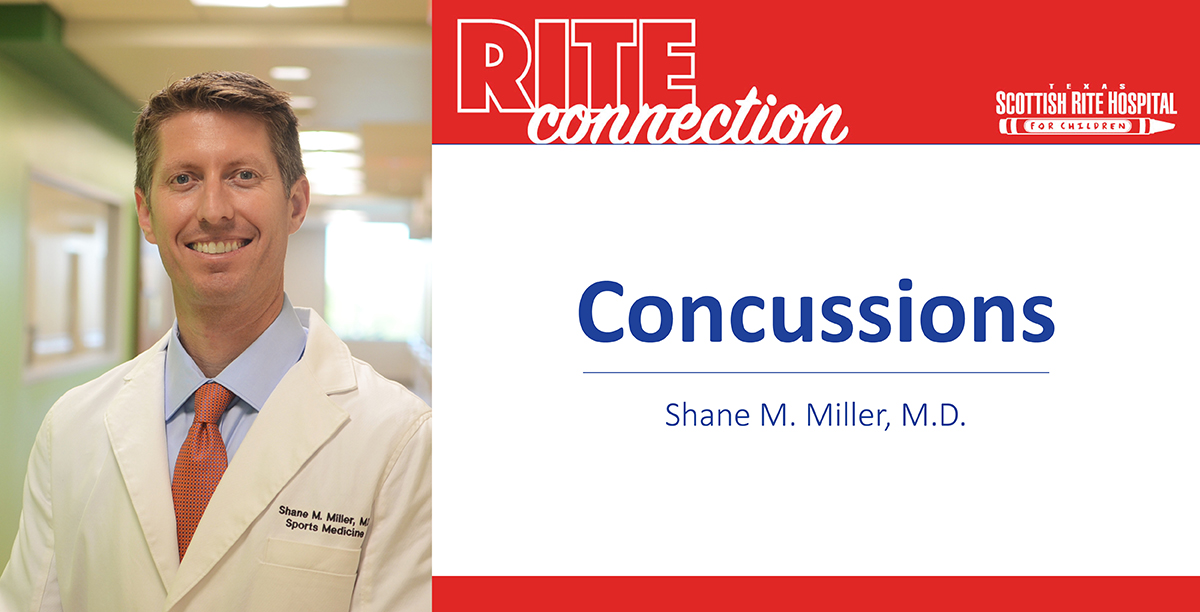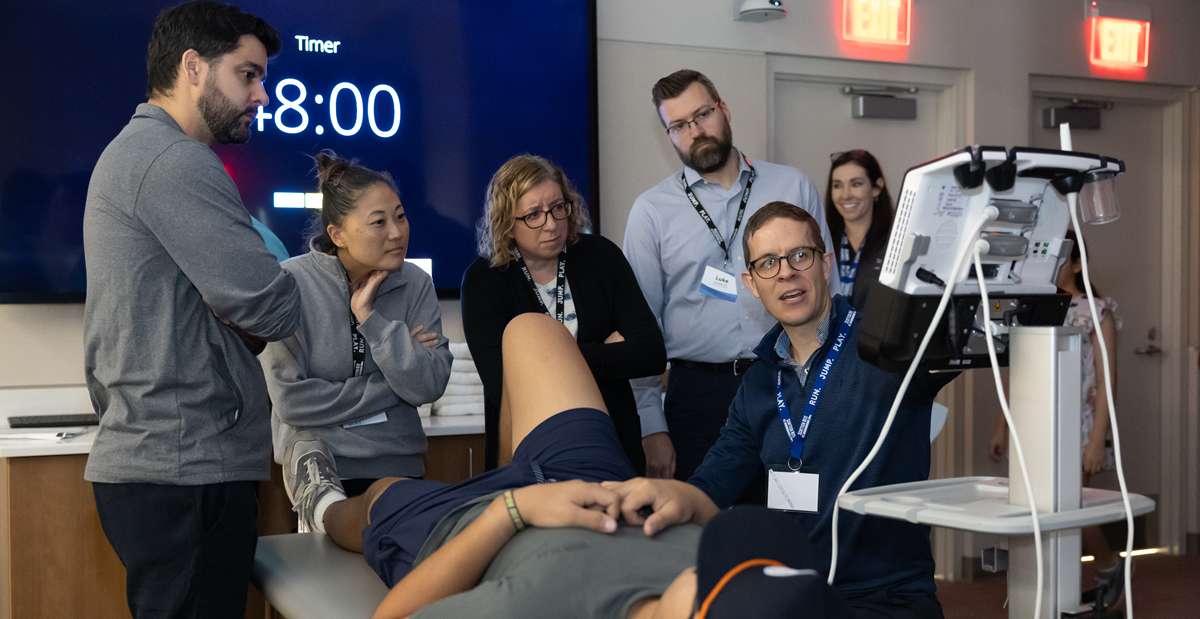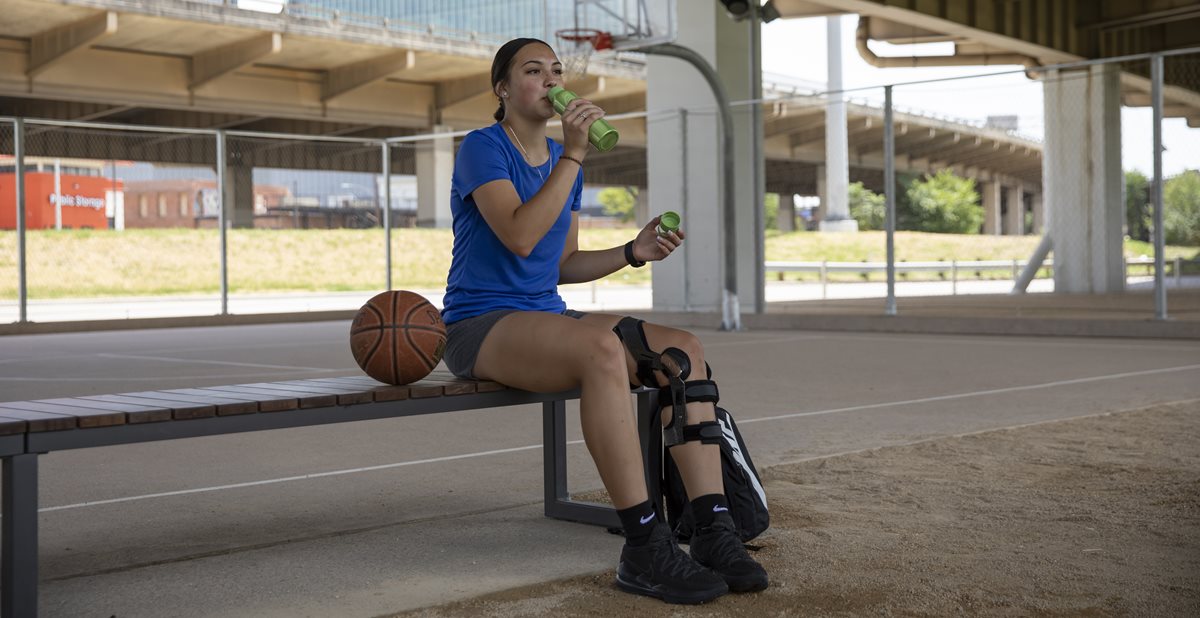
Feb 01, 2019 / Sports Medicine
Concussion Management: New Guidelines
Article originally published by sports medicine physician Shane M. Miller, M.D., in Winter 2018 issue of the Council on Sports Medicine and Fitness newsletter.
New Guidelines from the CDC and AAP Highlight Updates in Concussion Management
It would be an understatement to say there has been a lot of focus on concussions recently. A brief PubMed search yields over 4,400 publications for the term “concussion” over the past 5 years, and a Google search returns 34.5 million results. Meanwhile, patient encounters in both the outpatient and emergency department settings have continued to increase. It is a daunting task to keep up with the ever-changing landscape and evolving science.
In an effort to help pediatric health care providers decipher this vast amount of information, the Centers for Disease Control and Prevention (CDC) convened a group of experts who conducted a systematic review and recently released an evidence-based set of clinical guidelines1 with recommendations on the diagnosis, prognosis and management of pediatric mild traumatic brain injury (mTBI), often referred to as concussion. The literature search included publications prior to August 2015, so did not include any studies published in the last 3 years. This set of guidelines was released shortly before the AAP Council on Sports Medicine and Fitness published an updated clinical report, “Sport-Related Concussion in Children and Adolescents”2 in November 2018 (which included studies through 2017). Members of the Council on Sports Medicine and Fitness authored the AAP guidelines, and also served as co-authors for the CDC guidelines.
Key practice-changing recommendations from the CDC Pediatric mTBI Guideline include:
DIAGNOSIS
Print the PDF
References:
New Guidelines from the CDC and AAP Highlight Updates in Concussion Management
It would be an understatement to say there has been a lot of focus on concussions recently. A brief PubMed search yields over 4,400 publications for the term “concussion” over the past 5 years, and a Google search returns 34.5 million results. Meanwhile, patient encounters in both the outpatient and emergency department settings have continued to increase. It is a daunting task to keep up with the ever-changing landscape and evolving science.
In an effort to help pediatric health care providers decipher this vast amount of information, the Centers for Disease Control and Prevention (CDC) convened a group of experts who conducted a systematic review and recently released an evidence-based set of clinical guidelines1 with recommendations on the diagnosis, prognosis and management of pediatric mild traumatic brain injury (mTBI), often referred to as concussion. The literature search included publications prior to August 2015, so did not include any studies published in the last 3 years. This set of guidelines was released shortly before the AAP Council on Sports Medicine and Fitness published an updated clinical report, “Sport-Related Concussion in Children and Adolescents”2 in November 2018 (which included studies through 2017). Members of the Council on Sports Medicine and Fitness authored the AAP guidelines, and also served as co-authors for the CDC guidelines.
Key practice-changing recommendations from the CDC Pediatric mTBI Guideline include:
DIAGNOSIS
- Do not routinely image pediatric patients to diagnose mTBI. Standard CT and MRI are not helpful in making the diagnosis of a concussion. The risk of clinically important intracranial injury in the absence of risk factors or “red flags” is rare, so the decision to obtain neuroimaging should be made using validated clinical decision rules such as the PECARN Rules3 and reserved only for those deemed to be high risk. Providers should reassure families of low-risk patients and counsel them on the risks of CT, as parents often present to the ED expecting a head CT, and this is still commonly performed in many urgent care and emergency settings with less comfort treating pediatric patients.
- Use validated, age-appropriate symptom scales to diagnose mTBI. The use of a symptom scale, such as the Post-Concussion Symptom Scale (PCSS) or Graded Symptom Checklist, has been demonstrated to help distinguish between those with and without mTBI in the pediatric and adolescent patient. The Standardized Assessment of Concussion (SAC) was not recommended. The addition of computerized neurocognitive testing may increase diagnostic sensitivity over a symptom-scale alone, although interpretation should be performed by those with proper training. Serum markers were also not recommended for diagnosis of mTBI.
- Assess for risk factors for prolonged recovery. The majority of pediatric patients will recover within 1-3 months of the injury. Although every injury is unique, patients with various premorbid conditions (e.g., previous history of mTBI, neurological or psychiatric disorder, learning difficulties), demographics (e.g., older children/adolescents, lower socioeconomic status, female sex), and injury-related factors (e.g., greater number or severity of symptoms) may be at risk of persistent symptoms and prolonged recovery. Identification of those at risk for prolonged recovery may facilitate early targeted intervention and specialist referral, as well as anticipatory guidance and counseling for families.
- Provide patients with instructions on returning to activity, customized to their symptoms. Education regarding the injury, expected course of recovery, management plans and follow-up instructions are thought to improve outcomes and reduce parental and patient anxiety, as well as better align expectations with those of the provider. Symptom scales are not only useful for diagnosis, but along with other tools such as assessment of cognitive function, balance, and vestibular/ocular motor screening may guide initial management plans and assess recovery. Plans should be individualized to the patient with a gradual increase in activity as symptoms improve. It is appropriate to treat headache following acute mTBI with non-opioid analgesics such as acetaminophen or ibuprofen. Providers should consider the possibility of medication-overuse headache (formerly rebound headache) in patients with chronic post-traumatic headaches, and the guidelines recommend specialist referral for those with chronic headaches, due to the often multi-factorial nature (emotional, cervical, migraine, vestibular/ocular-motor, etc.).
- Counsel patients to return gradually to non-sports activities after no more than 2–3 days of rest. Although reduced physical and cognitive activity in the early acute phase may provide some benefit, prolonged periods of strict rest are no longer recommended, and may be detrimental to recovery. A “Return to Learn”4 program that incorporates input from the medical team, school team, and patient/family and allows for a gradual increase in academic work and cognitive load is integral to a successful reintegration into the school setting. Prolonged absences from school are unnecessary and contribute to additional stress and delayed recovery. Early initiation of light aerobic activity that doesn’t exacerbate symptoms appears to be not only safe, but beneficial! Patients should be encouraged to gradually resume non-contact physical activities as symptoms allow. Patients who are unable to begin a gradual Return to Learn and physical activity within a few days of the injury may benefit from specialist referral.
Print the PDF
References:
- Lumba-Brown A, Yeates K, Sarmiento K, et al. Centers for disease control and prevention guideline on the diagnosis and management of mild traumatic brain injury among children. JAMA Pediatrics. 2018;172(11):e182853.
- Halstead ME, Walter KD, Moffatt K. Sport-Related Concussion in Children and Adolescents. Pediatrics. 2018.
- Kuppermann N, Holmes JF, Dayan PS, et al. Identification of children at very low risk of clinically-important brain injuries after head trauma: a prospective cohort study. Lancet (London, England). 2009;374(9696):1160-1170.
- Halstead ME, McAvoy K, Devore CD, Carl R, Lee M, Logan K. Returning to learning following a concussion. Pediatrics. 2013;132(5):948-957.



